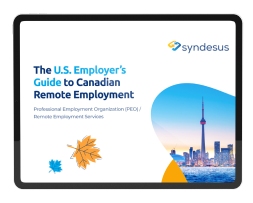During the Great Depression, the phrase “American Dream” appeared in a popular book by historian James Truslow Adams. In the book title “The Epic of America” Adams defined the American Dream as “that dream of a land in which life should be better and richer and fuller for everyone.”
Adams went on to explain that the American Dream is not only about money but also about the opportunities to overcome barriers and social class and to become the best version of ourselves.
While the definition of the American Dream varies from person to person, only 11% of the US public thinks being wealthy is a criterion to achieve it.
In a study by the Pew Research Center, most people say a good family life (70%), freedom in how to live (77%), and retiring comfortably (60%) are essential components of their view of the American Dream.
And while the idea seems simple, the prospect of achieving these things in America is dwindling.
Only thirty-six percent of US adults say they have achieved the American Dream according to an August survey by Pew Research Center. Interesting to note, the people in this study who claim to have achieved the American Dream tend to be older, better educated, and more wealthy.
Student loan debt, stagnant wages, and the ever-increasing cost of living are just a few of the factors preventing many in the US from achieving any version of the American Dream.
So what about everyone else? More specifically, especially new immigrants who are looking for a new home to expand their careers, start a business, raise their families, and have a decent life?
That dream for immigrants seems to be dwindling in the US, but growing in Canada. Is the American Dream failing?
What is the American Dream, and why is it failing?
Harvard economist Raj Chetty led research that combed through and analyzed millions of US tax records that stretched over decades.
Chetty and his researchers found that the American Dream was attainable post-the Great Depression. For kids born in the 1940s, about 92% of them out-earned their parents by age 30.
For children born in the 1980s — today’s millennials — only half of them make as much money as their parents did.
This generation of Americans was essentially guaranteed to achieve the American Dream because the economy was growing rapidly and the wealth reached all classes of people.
But in the 1980s economic inequality began to rise, and although the tech boom of the 1990s slowed the decline of the American Dream, the slow was only temporary. For children born in the 1980s — today’s millennials — only half of them make as much money as their parents did.
Equality of opportunity has always been a key aspect of the American Dream — the idea that anyone can achieve success in the US.
But Joseph Stiglitz, the Nobel-winning economist at Columbia University, noted in a recent speech that the “data now show that this is a myth: America has become the advanced country not only with the highest level of inequality but one of those with the least equality of opportunity.”
So, for families, especially immigrant families, in search of the best pathway to economic mobility, where can you go?
Increasingly, the answer is Canada.
The Canadian Dream — can immigrants achieve it?
Very simply, the Canadian Dream is more attainable. Growing inequality is a big reason the American Dream has derailed, and while far from perfect, Canada has created policies designed to reduce inequality.
For example, almost 20% of Americans are born below the poverty line compared to less than 10% of Canadians. But the inequality comparison does not end there. American women are twice as likely to die as a result of pregnancy or childbirth as Canadian women.
A recent O.E.C.D. report found that Americans ranked last among rich countries in numeracy and technological proficiency. Americans also work, on average, 4.6% more hours than Canadian workers and a whopping 28% more hours than German workers.
Canadians benefit from essentially free health care while Americans spend on average over $12,500 a year on health care. Canadians also live longer than Americans — the average Canadian lifespan is 81.7 while the average American life expectancy is 77.8.
Canada has set a goal to welcome 400,000 migrants annually…
If Canada sounds tempting, you’re not alone in thinking that.
Americans have been crossing into Canada for centuries, and today more than one million Americans live in Canada. This is because Canada is committed to creating policies that ease mass migration and assimilation.
Canada has set a goal to welcome 400,000 migrants annually to add to its 38 million population, and Canada’s Century Initiative is working to grow its population to 100 million, mostly with the help of immigration.
Already, one-fifth of Canada’s population is immigrants, and if its current rate continues, by 2036 half the country’s population will be foreign-born or have at least one immigrant parent.
Overall, life is easier for immigrants in Canada. Canada’s immigration rules have long prioritized newcomers who are educated and highly skilled.
Canada is actively seeking and recruiting new talent as it continues to diversify its economy. When America’s H-1B visa program hit snags in recent years, Canada benefited.
Some even went so far as to call the executive order suspending the H-1B visa program dubbed the order the “Canadian job creation act.”
Overall, life is easier for immigrants in Canada. Canada’s immigration rules have long prioritized newcomers who are educated and highly skilled. And Canada has a global reputation for being the most welcoming country to migrants — there’s even data to back that claim up.
Feeling safe and welcome in a new country is important for immigrants who plan to achieve the Canadian Dream.
Syndesus can help you get started in Canada
A warm welcome for immigrants and ease of immigration are just two of the reasons why Canada is the ideal place to strive for success. If you’re interested in achieving the Canadian Dream, Syndesus can help.
… a professional employer organization (PEO), Syndesus acts as the employer of record, legally hiring the worker on behalf of the US employer, and taking care of the billing, HR, legal and other paperwork.
Syndesus helps individuals, especially those in the US in H-1B, F-1 OPT, or other status with no sure future in the US, relocate to Canada and continue to work remotely for their US employer.
We specifically support small and mid-size US companies that don’t have an office in Canada.
That’s because a professional employer organization (PEO), Syndesus acts as the employer of record, legally hiring the worker on behalf of the US employer, and taking care of the billing, HR, legal and other paperwork.
And if you’re looking for a new tech job in Canada and want to work for a Canadian company, Path to Canada, a service provided by Syndesus, can match you with Canadian employers that will sponsor you for a work visa.




